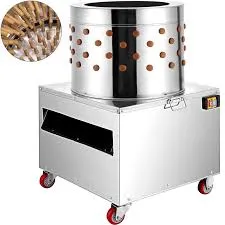semi automatic egg tray machine
Dec . 13, 2024 15:45 Back to list
semi automatic egg tray machine
The Advantages of Using Semi-Automatic Egg Tray Machines
In the poultry industry, the demand for effective and efficient packaging solutions is ever-growing. Egg tray production plays a crucial role in ensuring that eggs are transported safely to markets without damage. Among the various options available for egg tray manufacturing, semi-automatic egg tray machines have emerged as a popular choice due to their numerous advantages.
Understanding Semi-Automatic Egg Tray Machines
Semi-automatic egg tray machines are designed to produce a variety of molded pulp products, with a primary focus on egg trays. These machines utilize recycled paper, cardboard, or other biomass materials to create sustainable packaging solutions. The production process typically involves the soaking of raw materials in water to create pulp, which is then molded into the desired shapes using specialized molds.
The semi-automatic aspect of these machines refers to the combination of manual and automated processes. While certain stages in the production cycle require human intervention, such as feeding the pulp into molds or stacking the finished trays, many components operate automatically. This hybrid approach offers an appealing balance between cost-effectiveness and efficiency.
Key Benefits of Semi-Automatic Egg Tray Machines
1. Cost Efficiency One of the most significant advantages of semi-automatic egg tray machines is their cost efficiency. These machines are generally less expensive than fully automatic counterparts, making them accessible for small to medium-sized businesses. The low initial investment allows companies to benefit from high-quality egg trays without the financial burden of more advanced technology.
semi automatic egg tray machine

2. Flexibility and Customization Semi-automatic machines allow for greater flexibility in production. Operators can easily adjust settings to produce different types of trays or molds as per the specific needs of their clients. This adaptability enables businesses to cater to diverse market demands without the need for extensive machine modifications.
3. Higher Control Over Quality By incorporating manual processes, semi-automatic machines provide operators with greater control over the production quality. Workers can monitor each step carefully, ensuring that the pulp is adequately molded and dried. This oversight can lead to higher-quality trays that meet industry standards and consumer expectations.
4. Sustainability In an age where environmental concerns are paramount, semi-automatic egg tray machines contribute to sustainable practices. Utilizing recycled paper products reduces waste and minimizes deforestation. The production process itself is eco-friendly, as it generates no harmful emissions and consumes less energy compared to plastic packaging alternatives.
5. Scalability Businesses use semi-automatic egg tray machines as a stepping stone to scale their operations. Starting with semi-automatic production allows companies to establish their processes and customer base before transitioning to fully automatic systems as demand increases. This scalable approach helps in managing investments and resources effectively.
6. Ease of Operation and Maintenance Semi-automatic machines are generally user-friendly and easier to operate than fully automatic machines. Training employees is less complex, making it easier for businesses to maintain productivity with lower downtime. Furthermore, these machines often require less intensive maintenance, which can save costs in the long run.
Conclusion
In conclusion, semi-automatic egg tray machines present a compelling option for those in the poultry packaging industry. Their cost-effectiveness, flexibility, and emphasis on quality control make them an attractive choice for many businesses. Additionally, their contribution to sustainability aligns with the growing trend of environmentally conscious practices. As the demand for safe and reliable egg packaging continues to rise, investing in semi-automatic egg tray machines could be a prudent move for many producers looking to enhance their operations while minimizing environmental impact. With the right approach, these machines can provide both economic viability and contribute positively to the planet.
-
Hot Sale 24 & 18 Door Rabbit Cages - Premium Breeding Solutions
NewsJul.25,2025
-
Automatic Feeding Line System Pan Feeder Nipple Drinker - Anping County Yize Metal Products Co., Ltd.
NewsJul.21,2025
-
Automatic Feeding Line System Pan Feeder Nipple Drinker - Anping County Yize Metal Products Co., Ltd.
NewsJul.21,2025
-
Automatic Feeding Line System - Anping Yize | Precision & Nipple
NewsJul.21,2025
-
Automatic Feeding Line System - Anping Yize | Precision & Nipple
NewsJul.21,2025
-
Automatic Feeding Line System-Anping County Yize Metal Products Co., Ltd.|Efficient Feed Distribution&Customized Animal Farming Solutions
NewsJul.21,2025






